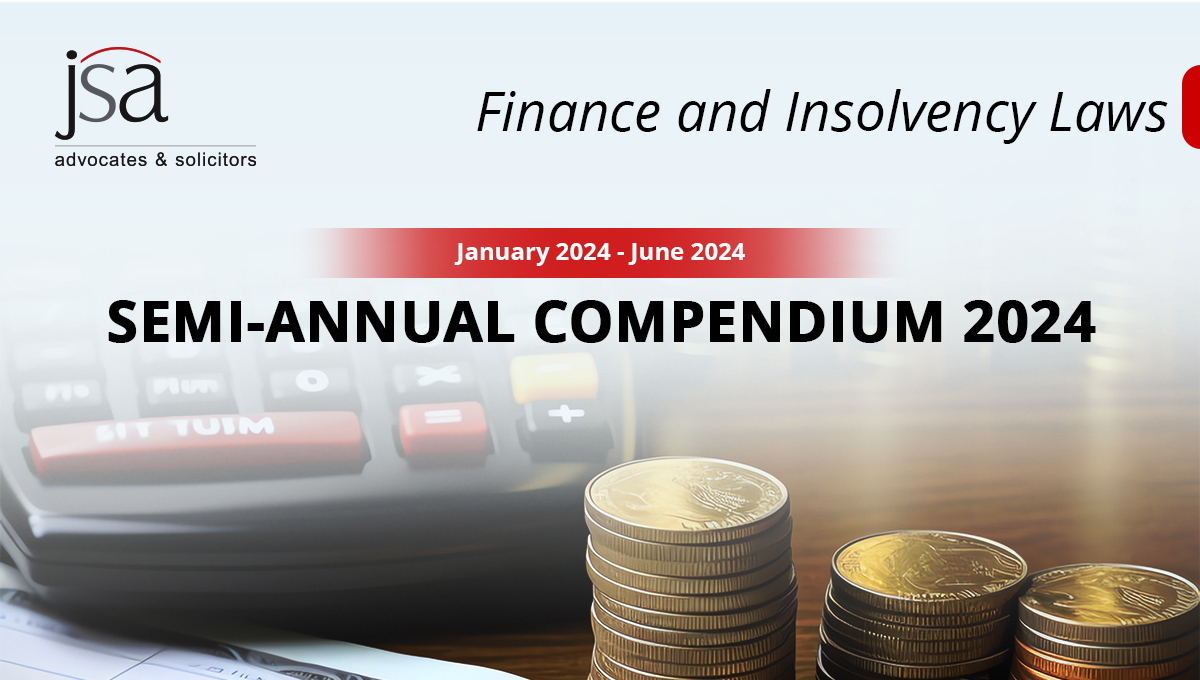Please click here to download the Prism as a PDF.
Ministry of Environment, Forest and Climate Change seeks comments on the draft Remediation of Contamination Sites Rules, 2024
The Ministry of Environment, Forest and Climate Change (“MoEFCC”) has on August 21, 2024, released the draft Remediation of Contamination Sites Rules, 2024 (“Draft Rules”) for public consultation seeking comments till October 22, 2024.
Key highlights
- Applicability: The Draft Rules will apply to remediation of sites contaminated by ‘hazardous substances’ as defined under the Environment (Protection) Act, 1986 (“EPA”) and listed in the various schedules to the Hazardous and Other Waste (Management and Transboundary Movement) Rules, 2016 (“HW Rules”). The Draft Rules also cover sites where hazardous substances exceed the prescribed standards when mixed with mining, bio-medical and municipal solid waste. However, the Draft Rules are not applicable to sites contaminated by radio-active wastes, mining waste and oil spills since they are covered separately under the Atomic Energy Act, 1962, Mines and Minerals (Development and Regulation) Amendment Act, 2015, Merchant Shipping Act, 1958, Marine Insurance Act, 1963 and Merchant Shipping (Prevention of Pollution of Sea by Oil) Rules, 1974, respectively.
- Key Responsibilities of relevant authorities:
- Central Government:
- constitute Central Remediation Committee (“CRC”); and
- recommend the State Government on relocation of people already residing in confirmed contaminated sites for remediation of such site.
- CRC:
- prescribe the format for Detailed Project Report (“DPR”);
- establish the procedure for determination of responsible persons, remediation costs and environmental damage;
- Central Government:
-
-
- recommend to the urban local bodies / district level panchayati raj institutions (“Local Body”), the agency to award the job of detailed investigations of contaminated sites identified by the Local Body;
-
-
-
- review the detailed site investigation of the probable contaminated sites and decide in consultation with the State Government whether the site is a confirmed contaminated site requiring remediation or restricted use;
- review remediation investigation report;
- approve DPRs submitted by the State Pollution Control Board (“SPCB”) and approve the remediation activities after its completion by the SPCB;
-
-
-
- publish a list of Reference Organisations (“RO”) having relevant multi-disciplinary experience relating to remediation of confirmed contaminated site based on recommendations of the CRC which can be used by the responsible persons or SPCBs for assigning remediation activities;
- establish a framework for estimating the damage to environment, natural resources, flora and fauna and determine the liability to be borne by the responsible person.
-
-
- Local Bodies:
- Prepare inventory of suspected contaminated sites: Local Bodies will prepare an inventory of suspected contaminated sites within their jurisdiction from various sources such as railways, parks, special economic zones and submit it to SPCB / Central Pollution Control Board (“CPCB”). This inventory should consider public complaints, past experiences, reporting of incidents, information from relevant pollution controls acts and rules, prior studies or investigations etc. The Local Bodies will submit this inventory to CPCB within 1 (one) year of the enactment of the Draft Rules and then annually by June 30th.
- Preliminary site assessment and detailed site investigation: Local Bodies will undertake preliminary site assessment and detailed site investigation either on their own or get it conducted by the owner through the RO.
- State Government:
- Inputs to CRC: The State Government will review and confirm the status of the contaminated sites and decide if it requires remediation. It will engage RO to undertake detailed investigation.
- Enabling public private partnership: The State Government will develop modalities for public private partnership to remediate orphan sites.
- Local Bodies:
-
-
- Allocation of remediated orphan sites: The State Government can allocate the remediated orphan sites to the beneficiaries of Pradhan Mantri Awas Yojana – Grameen and Urban for construction of residential houses.
-
-
- SPCB:
- Prepare priority list: SPCB will prepare a priority list based on the ranking of the confirmed contaminated sites within 90 (ninety) days of finalisation of confirmed contaminated site list by CPCB.
- Identification of responsible person: SPCB will have to investigate and gather prima facie evidence of the person responsible for polluting a probable contaminated site. Details of the responsible person(s) will also be shared. SPCB will direct the responsible person to prepare a remediation design and DPR through a RO.
- SPCB:
-
-
- Review DPR: SPCB will review and revise the DPR and submit it to the CRC for approval within 2 (two) months from the date of receipt of original or revised DPR.
-
-
-
- Post remediation monitoring plan: SPCB will engage RO and develop a post remediation monitoring plan to submit it to the CRC. The plan shall include management measures, technical measures including monitoring and maintenance measures, deviation points and reporting plans. SPCB shall issue a remediation completion order directing the site owner to undertake appropriate measures as may be required.
- Orphan sites: In case of orphan sites, SPCB can engage RO to (x) develop remediation plan; (y) prepare DPR; and (z) initiate process for implementation of remediation. It will also be required to formulate and submit tender evaluation report, appoint remediation contractor, monitor the remediation work and report the completion of remediation to CPCB.
-
-
- CPCB:
- Publish list of confirmed / probable contaminated sites: CPCB will publish confirmed and probable contaminated sites online for objection and suggestions and include details on site restrictions and safety measures.
- Approve financial penalties: CPCB will approve financial penalties proposed by SPCBs for any violation of the Draft Rules based on CRC recommendations.
- CPCB:
-
-
- Develop online portal and maintain contaminated registry: CPCB will develop an online portal with geotagging / geo-fencing, remote sensing and satellite imagery of all probable and confirmed contaminated sites. CPCB will establish and maintain a contaminated site registry on the online portal that contains all information on probable / confirmed contaminated sites in the country.
-
-
-
- Issuing guidelines: CPCB will issue guidelines for various issues such as preliminary site assessment, detailed site investigation and remediation investigation, on the online portal.
- Filing consolidated review report: CPCB will prepare a consolidated review report on management of contaminated sites and submit it annually with recommendations to MoEFCC.
-
- Financial mechanism for remediation activities:
- Investigation Funding: Initial funding for preliminary and detailed investigations of suspected and probable contaminated sites will come from the Environment Relief Fund (“ERF”) established under PLIA and the State Government. The State Government may also utilise the from the Environment Protection Fund (“EPF”) established under the EPA.
- Responsible person: The funds allocated from ERF and the State Government for preliminary and detailed site investigation will be recouped from the responsible person. The responsible person will also be responsible for payment of funds for remediation plan of the confirmed contaminated site. In case the probable contaminated site is not confirmed to be a contaminated site after detailed investigation, the responsible person will not be liable for recouping of funds to ERF and the State Government.
- Orphan sites: The funds for conducting preliminary investigations, detailed investigation and preparation of remediation plan for suspected contaminated sites, probable contaminated sites and confirmed contaminated sites shall be met from ERF and the State Government in the prescribed ratio. After remediation of the site, the land can be auctioned by the land-owning agency and the part of revenue may be recouped to ERF. Remediation can be done through public private partnership model wherein the private party may be given ownership of the land in view of the cost incurred.
- Responsible person:
- the Draft Rules define ‘responsible person’ as one or more persons jointly or severely responsible for contamination of site and responsible for incurring the remediation cost and other related claims;
- responsible person is absolutely, retroactively and jointly and severally liable for remediation costs whether incurred on or off the confirmed contaminated site;
- the responsible person is responsible for all damages caused to the environment or third party due to confirmed contaminated site as well as the environmental compensation for violation of provisions of the Draft Rules; and
- the liabilities of the responsible person will not be exempted or excluded on account of contamination and its effects being occurring at different points of time, site investigation not being mandatory or expected as part of business practice, contaminants not notified prior to the commencement of HW Rules, Hazardous Wastes (Management, Handling and Transboundary Movement) Rules, 2008 or Hazardous Wastes (Management and Handling) Rules, 1989 or being caused by substances which are not notified as hazardous substance.
- Voluntary remediation: voluntary remediation can be carried out on sites which are (a) currently not categorised as probable or confirmed contaminated sites; and (b) currently not being investigated by SPCB or CRC. The person proposing voluntary remediation is competent to manage or procure management of remediation and related environment and social aspects and local community requirements. A person seeking voluntary remediation must submit a preliminary assessment report, investigation report, a voluntary agreement between all owners and occupiers, proof of financial capacity, and an undertaking to comply CRC’s directions. The CRC may approve the proposal, but approval does not exempt the person from potential damages, environmental liability, or penalties for non-compliance with the Draft Rules.
- Environmental compensation:
- environmental compensation will be levied in the following activities:
- responsible persons not depositing remediation cost on time;
- providing false information / willful concealment of material facts by responsible persons; and
- submission of forged / manipulated documents by the entities;
- Environmental compensation will be double the remediation cost that is to be deposited by the responsible persons and will not replace the remediation cost itself. These funds will go into the ERF for orphan site remediation and related activities as prescribed by the Central Government.
- environmental compensation will be levied in the following activities:
- Remediation cost:
The components of the remediation cost have been set out in Schedule III of the Draft Rules and include costs associated with:
-
- engaging third parties such as RO, contractors, consultants, lawyers and experts;
- investigation, survey, assessment, sampling, preparation, management, corrective measures, project management, permitting, licensing, tendering, insurance etc.;
- remediation and post remediation measures including site access measures;
- temporary or permanent relocation and rehabilitation of affected persons;
- organising stakeholder consultation, coordination, communication and conflict resolutions;
- securing and enforcing compliance with land use and site activity restrictions; and
- Demolishing, repairing and rebuilding any building and structure at confirmed contaminated sites.
Conclusion
The lack of specific legislation for remediation of contaminated sites has been a legacy issue in the country, hindering concrete action by authorities such as Local Bodies and SPCBs for decades. The uncertainty surrounding funding mechanisms has been a significant obstacle, particularly for ‘orphan sites’ where contamination may have occurred decades ago and the responsible parties cannot be identified.
The success of the proposed Draft Rules depends on building upon past efforts in identifying and remediating contaminated sites. The National Green Tribunal (“NGT”) had sought to bridge the legislative gap by directing the CPCB and SPCBs to undertake identification and remediation steps. For instance, in the case of Rajiv Narayan vs. Union of India[1], the NGT directed state authorities to identify contaminated sites and undertake remediation activities. In view of the consistent supervision by the NGT in the Rajiv Narayan case (supra), the exercise for identification of contaminated sites was undertaken and the state authorities were directed to undertake remediation activities and submit periodic updates.
However, the Draft Rules fail to incorporate mechanisms for building upon existing efforts. Crucially, they do not address contentious issues, such as:
- Identifying responsible persons: The Draft Rules lack a clear mechanism for SPCBs to follow in the identification of responsible persons, especially when the action is against the occupier / owner.
- Remediation costs: The Draft Rules do not provide a transparent mechanism for computation of remediation costs which can be reviewed by the responsible persons and others. Without establishing a definite procedure for computation, the liability of incurring remediation costs will consistently get challenged by the responsible persons.
It may be worthwhile to notify the final rules only after addressing these issues after incorporating public comments on them.
This Prism has been prepared by:

Amit Kapur |

Nawneet Vibhaw |
Prannoy Sebastian |
For more details, please contact [email protected]
[1] OA No. 804 of 2017













